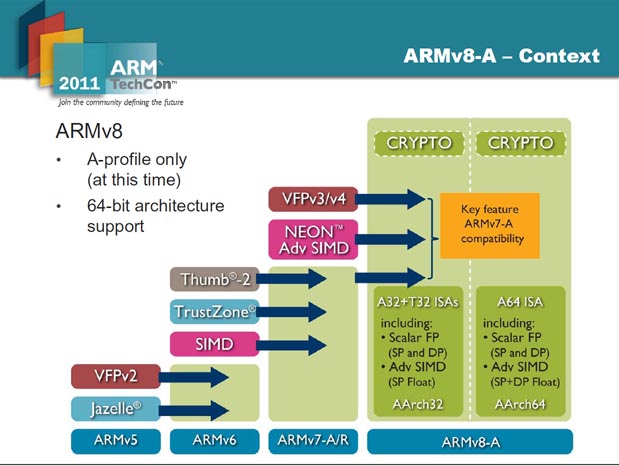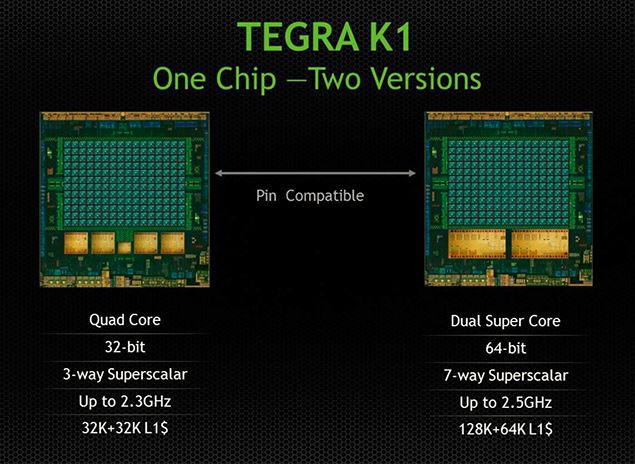An Introduction To The Major ARM-Based SoCs
When it comes to mobility, ARM-based SoCs dominate. Join us as we take a look at where the flagship processors from Qualcomm, Apple, Nvidia, and Samsung land in the competitive landscape.
Upcoming 64-bit SoCs
ARMv8 is the instruction set that adds support for 64-bit processing, AES encryption and SHA2 hardware acceleration, 128-bit NEON registers, and full backwards compatibility for apps currently built for the ARMv7 ISA.
Apple A8
Since Apple is usually quite secretive, we don’t know much about its next-gen SoC. There have been rumors that it'll operate at up to twice the clock rate (2.6 GHz) though, which would either mean that Apple found a way to make Cyclone more efficient through 20 nm manufacturing or is coming out with another architectural tweak better able to scale frequency.
The new A8 should also come with PowerVR graphics pushing twice as much performance, which is what Apple has historically done when upgrading the GPU. The new graphics engine will prove useful, since the upcoming iPhone is rumored to employ a much higher resolution (somewhere between 702p and 1080p) for the 4.7” screen size.
Nvidia Tegra K1
Tegra K1 is Nvidia’s current and highest-end mobile processor, armed with either four Cortex-A15 cores or two of the company's ARMv8-based Denver cores, along with the Kepler architecture made popular by any number of GeForce cards.
The Denver/Kepler combination of Tegra K1 is particularly promising. On one hand, you have the 64-bit ARMv8-based CPU that should be significantly faster than those revised Cortex-A15s in the 32-bit Tegra K1. On the other, there's Nvidia’s PC graphics architecture, with a handful of modifications to be more mobile-friendly. Still, it supports APIs that other SoCs can't touch. Beyond OpenGL ES 3.1, you get OpenGL 4.4, DirectX 11.1 and CUDA.
The mobile Kepler-based GPU is also specified for performance that should go unmatched by anything except maybe Imagination’s upcoming mobile GPUs. Nvidia uses the Xbox 360 and PS3 as its comparison points in marketing material, and that should help garner attention in any set top boxes running Android. At least in theory, PC and console games are made easier to port over thanks to comprehensive API support. Whether or not developers jump on that remains to be seen.
While the upcoming Snapdragon and Exynos chips appear to be slight upgrades compared to current products, the most interesting chips coming out in the mobile market this year should be Nvidia’s first ever proprietary CPU design, Denver, and Apple’s A8, both based on the ARMv8 instruction set. Both advanced architectures, combined with the higher clock rates expected from them, should facilitate the "desktop-class" performance we've been told to expect.
Get Tom's Hardware's best news and in-depth reviews, straight to your inbox.
Qualcomm, Samsung, Nvidia, and Apple are all important players in the chip market now, and they've individually come a long way. But this is only the beginning for them. It will be interesting to observe how competitive all four vendors are once they have processors based on ARM's 64-bit instruction set, allowing them to compete on a more equal footing.
Lucian Armasu is a Contributing Writer for Tom's Hardware US. He covers software news and the issues surrounding privacy and security.

